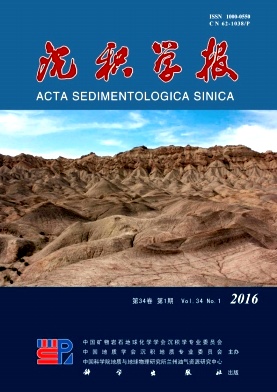Color Variations of Paleosol-Sand Profiles across Otindag Sandy Land and Its Paleoclimatic Implications
doi: 10.14027/j.cnki.cjxb.2016.01.006
- Received Date: 2015-01-14
- Rev Recd Date: 2015-03-18
- Publish Date: 2016-02-10
-
Key words:
- Otindag sandy land /
- sand-paleosol /
- Lightness (L*) /
- organic matter /
- East Asian summer monsoon /
Abstract: The alternating units of dune sands and paleosols are widely distributed acorss arid and semi-arid region of Northern China. To study the possible relationship between sand-paleosol sequences color and paleoclimate, three color parameters, lightness (L*), redness (a*) and yellowness (b*), of seven relict sand-paleosol profiles across Otindag sandy land were measured with a colorimeter. The results show the values of L*, a*, b* are 32.41~65.89, 2.73~7.52 and -1.68~17.16, respectively. Three color parameters have significantly positive relationship, correlation between L* and b* is strongly significant (R2 = 0.90), but that of L* and a* is quite low (R2=0.26). Although lightness, redness and yellowness have similar trend curves along sand-paleosol profiles, their variations are distinctly different. The changes of L* value are significantly larger than that of both a* and b* values. Nonparametric tests of lightness, redness and yellowness on sand-paleosol profiles indicate that lightness and yellowness are significantly different between sand and paleosols layers, with relatively low lightness and yellowness values in the paleosols layers. By contrast, the redness could hardly indicate their differences between sand and paleosols layers. Variations of the lightness are strongly related to the contents of organic matter, clay and silt. Relative effects of these factors on the lightness decrease gradually from organic matter and clay to silt. These changes are founded to be due to variations in the regional patterns of precipitation, which is possibly attributed to cyclic oscillations of East Asian summer monsoon precipitation. Therefore, the lightness (L*) could be used as a proxy indices to reconstruct past summer monsoon variability. Low values of L* possibly indicate a relatively high organic matter and a strengthening signal of East Asian summer monsoon, and vice versa. These results suggest that quantitative color determination of sand-paleosol sequences using a colorimeter could provide a new clue to understand the East Asian summer monsoon changes.
| Citation: | FU XuDong, ZHOU GuangSheng, ZHANG XinShi. Color Variations of Paleosol-Sand Profiles across Otindag Sandy Land and Its Paleoclimatic Implications[J]. Acta Sedimentologica Sinica, 2016, 34(1): 70-78. doi: 10.14027/j.cnki.cjxb.2016.01.006 |






 DownLoad:
DownLoad: